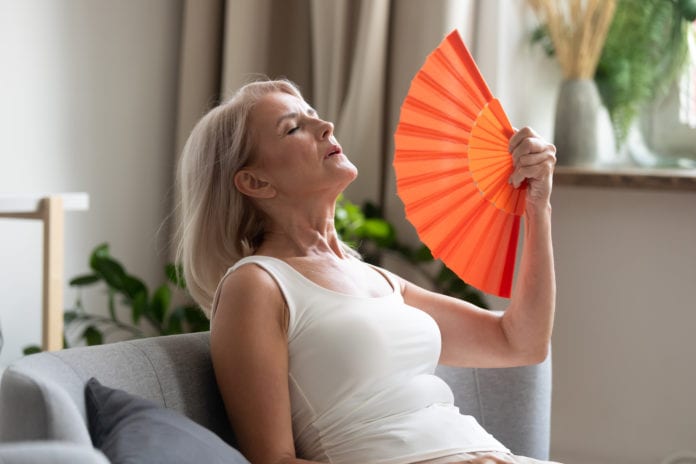When it comes to a woman’s cycle of life, menopause is a natural biological process that all women must go through as they age. From perimenopause to postmenopause, this 3-part cycle is natural and completely unavoidable. And in this day and age, the modern woman is spending a much longer period of her life in post-menopause than any other. Because of this, it is essential that women of all ages are informed about the process of menopause, what happens during it, and its different stages.
In this article, we’ve put together an informative guide talking about every part of the perimenopause and menopause cycle. From symptoms to treatments, let’s dive into a complete guide to menopause to help you gain a better understanding of the changes taking place in your body.
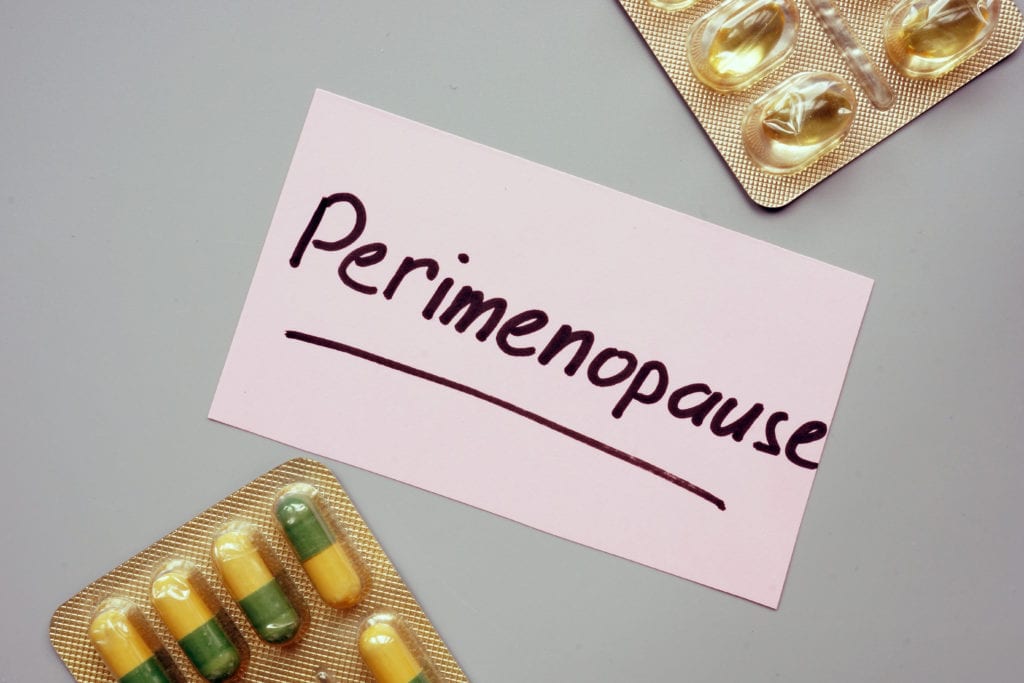
Perimenopause – First Signs of Menopause
Starting off, perimenopause is a biological process that occurs as the first sign of menopause. This is often referred to as the “transitional period” before menopause begins, where you start experiencing pre-menopausal symptoms. This is when estrogen levels begin to drop in the body, and the menstrual cycle becomes irregular as a result. However, the overall process of perimenopause takes many years to go through before menopause actually starts.
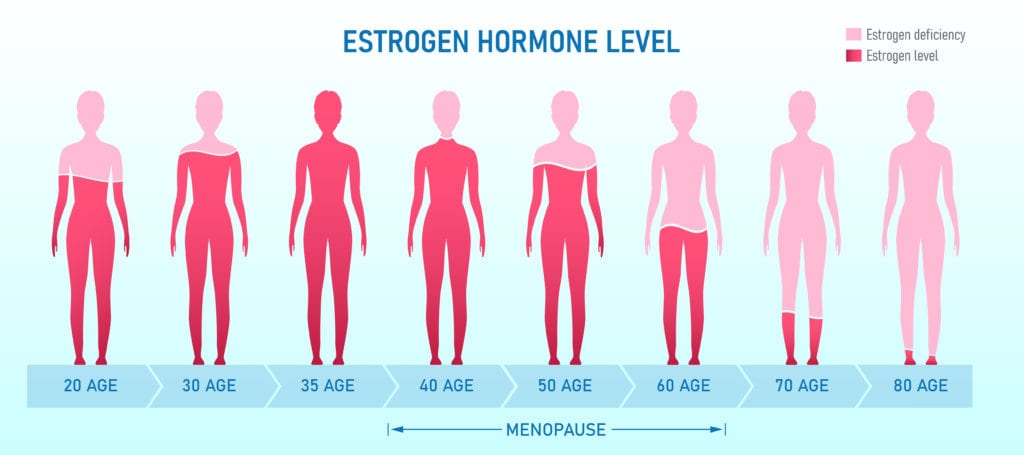
When does it begin?
On average, perimenopause typically starts in a woman’s 40s but can even start as early as their 30s, depending entirely on the woman herself. Once it starts, this process typically takes between four to eight years to go through before menopause actually begins. Towards the end of perimenopause, however, women will experience a major drop in estrogen level, which is when most women will begin to develop more intense symptoms.
What are the initial symptoms?
When it comes to the initial symptoms of perimenopause, women have reported a variety of symptoms over the decades. However, some of the most common symptoms that women experience are:
- Sporadic hot flashes
- Breast tenderness
- Fatigue
- Vaginal dryness
- Mood swings
- Irregular menstrual cycle
- Pain or discomfort during sex
- Urine leakage
- Low sex drive
However, all women will experience perimenopause symptoms differently. And in most cases, women experience only some of these, as each perimenopause cycle is unique to the individual.
What is going on?
Now, taking a look deeper into what the overall process of perimenopause looks like on the inside, women have a lot going on internally during this period, which is what is causing them to have such intense symptoms. When you look at the biological process behind it all, this happens because a women’s level of estrogen is both rising and falling erratically during perimenopause, making menstrual cycles and hormone levels very irregular. This is what causes women to have random pains, mood swings, hot flashes, etc.

With so much going on emotionally and hormonally, women often need help managing their symptoms. And thankfully, in this day and age, there are many excellent prescription options that doctors have to soothe the effects of this process and make it a little more bearable.
How to manage symptoms
Now, when it comes to managing symptoms for perimenopause, some women opt for low-dose birth control pills to help get relief from hot flashes, while others may try progesterone injections. However, there are many different ways you can help to manage your symptoms and help them not feel as intense. A few of the most common drug therapies that doctors often recommend include:
1. Hormone therapy
One of the most common treatments for perimenopausal symptoms is hormone therapy. Estrogen or hormone therapy is believed to be the most effective treatment for relieving intense perimenopausal symptoms, such as hot flashes. However, the dosage needed is entirely unique to your family’s medical history and your genetics; therefore, make sure you visit your doctor before trying any hormone treatments.
2. Antidepressants
Next, certain antidepressants are believed to help reduce menopausal hot flashes and mood swings. This is also a great option for women who can’t take estrogen for health reasons.
3. Vaginal estrogen
And lastly, to relieve vaginal dryness or pain, estrogen can be administered directly to the vagina using a cream, tablet, or ring. This treatment is often used to help release a small amount of estrogen into the vaginal tissue to help relieve vaginal dryness, discomfort, and uncontrollable urinary issues.
However, before deciding on any form of treatment, make sure you talk with your doctor about the options, risks, and benefits involved with each to find what may be the best option for you. You can also read more about symptom management and management options for perimenopause in a detailed article by NCBI here.

How long does it last?
Now, when it comes to the question of how long perimenopause lasts, the time a woman is in perimenopause typically varies on a per-person basis. Some women are in menopause for only a few years while others have reportedly been in it for as long as twelve years. However, the average length of perimenopause for most women is usually around four years.
Stages of Perimenopause
Next, when it comes to the stages of perimenopause, there are typically two stages in this transition. This includes:
1. Early Stage
The first stage of perimenopause is what is known as the early stage. Early-stage perimenopause is when a regular menstrual cycle starts to become erratic. You are in early-stage perimenopause when your period begins coming a week or more later than usual for several consecutive months.
2. Late Stage
The second stage of perimenopause is referred to as the late-stage and typically occurs when a woman is in her late 40s. During this time, women will also begin missing periods until they stop having them altogether. The late stage of perimenopause is also when there are around 60 days or more between each of your periods.
Perimenopause vs Menopause
Next, when it comes to these two major events in a woman’s life, honestly, it can be hard to tell the difference between the two as they share very similar symptoms. And for many women, the question often arises of if they are in perimenopause or in menopause. And honestly, the easiest way to tell the difference between if you’re in perimenopause or in menopause has to do entirely with your menstrual cycle.
Menopause is when you do not experience a menstrual cycle for a year. If this has not yet happened, a woman is still considered to be perimenopausal. During perimenopause, you may experience the same symptoms that you would also experience with menopause. However, periods will still occur in perimenopause, just on an irregular basis. This also means you can still get pregnant during perimenopause, while in menopause, you cannot.
Therefore, if you are still experiencing periods, you are in perimenopause. If you do not experience a period for a year, you are in menopause.
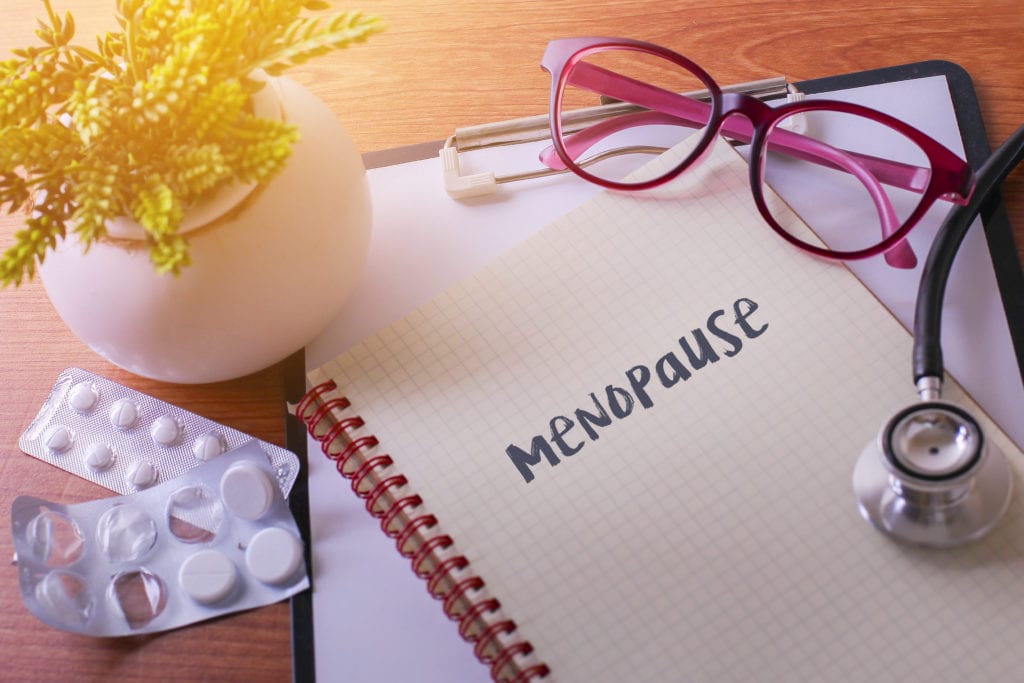
Menopause
Next, just as we mentioned above, after perimenopause passes, women will go into what is known as menopause. Menopause is a process that naturally occurs when a woman’s ovaries stop producing eggs and the production of female hormones declines. A sure sign you have entered menopause is if you haven’t had a period in over 12 months.
When does it begin?
For the most part, menopause will usually occur between the ages of 45 and 55. On average, women will reach menopause by the age of 51, but it can also occur at younger or older ages, such as women in their early 40s.
What is going on?
When it comes to the biological process behind menopause, there are a lot of things taking place internally for a woman during this time. During menopause, a woman’s body goes through major hormonal changes, decreasing the amount of estrogen and progesterone it makes. When this decrease occurs, the menstrual cycle begins to change. And as menopause nears, the ovaries no longer release eggs into the fallopian tubes, and the woman will have her last menstrual cycle.
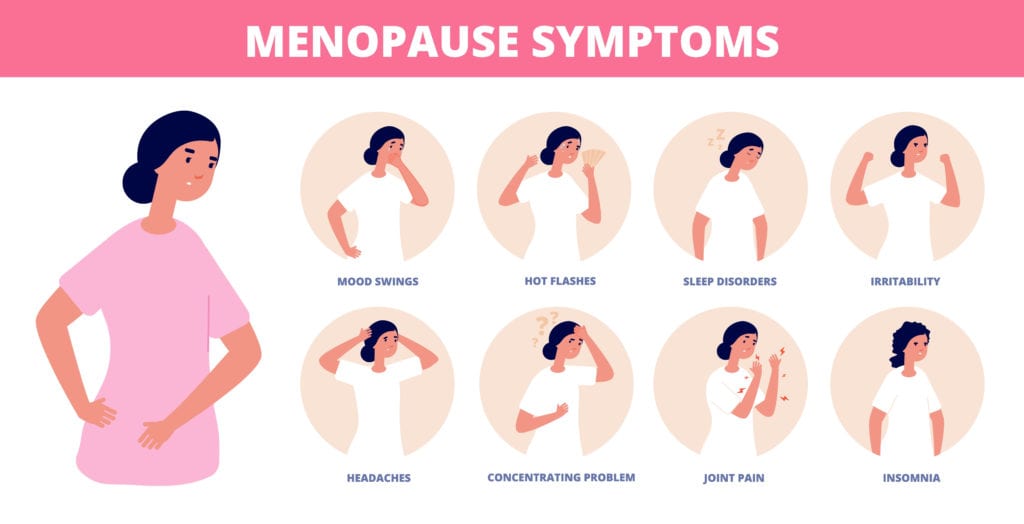
What are the symptoms?
With so much going on with the hormones in a woman’s body during menopause, symptoms are bound to get intense. Some of the major symptoms women experience at the start of menopause include:
- Irregular or missed periods
- Vaginal dryness
- Tender breasts
- Frequent urination
- Insomnia
- Emotional changes
- Dry eyes and skin
This is then followed by other symptoms that typically develop later, such as:
- Fatigue
- Moodiness
- Depression
- Headaches
- Muscle aches
- Hair loss
- Weight gain
- Changes in sex drive
However, women may experience all, some, or none of these symptoms, depending entirely on their genetics. If symptoms are present, however, and start to get a little too intense, there are several ways to help get them to be a little bit more manageable.
How to manage symptoms
When it comes to managing the symptoms of menopause, proper diet, yoga, meditation, and regular exercise are always recommended as a general way to improve your overall health. However, you may also need a more personalized solution to help to soothe your symptoms. For this, depending on the symptoms you have, your doctor may suggest one or all of the following:
1. Vaginal moisturizers
Depending on the symptoms you have when it comes to menopause, vaginal moisturizers may be recommended by a doctor and are available without a prescription. These products help to assist with vaginal moisture in women who are experiencing vaginal dryness. This will also help to keep the vaginal pH low, which will help to keep the inner vaginal environment healthy.
2. Urinary medication
Next, a common symptom many women experience in menopause is involuntary urination. However, there are thankfully many different treatments to help improve this, including a few you can do at home. This typically includes avoiding beverages with a high caffeine or acid content, as these have been known to irritate the bladder lining. In addition to this, kegel exercises can also be used to help strengthen the pelvic muscles to help reduce the chances of involuntary urination.
However, your doctor may also prescribe antispasmodics for more severe cases, which is a prescription medicine that can help to reduce the spasms in your bladder to help reduce the chances of involuntary urination.
3. Multi-symptom reducer
Next, perhaps the most common symptom women experience during menopause is hot flashes. Therefore, doctors will often prescribe gabapentin to help with this. However, if you would like to try a plant-based solution that also helps with night sweats, vaginal dryness, concentration, and low energy, Adonia’s Hot Flash Reducer will work for you. All you do is apply a topical solution to your forearm!
4. Antidepressants for mood swings
And lastly, just as with women who are going through perimenopause, antidepressants are often prescribed to help with depression and or mood swings that come with menopause. However, on top of antidepressants, a doctor may also suggest lifestyle changes, such as a better diet, regular exercise, yoga, or therapy to help assist with your overall mental state.
Of course, there are a variety of other treatments your doctor can recommend to you based on your personal symptoms during menopause. For additional information regarding other treatment options for managing menopause symptoms, be sure to check out Mayo Clinic for more options.
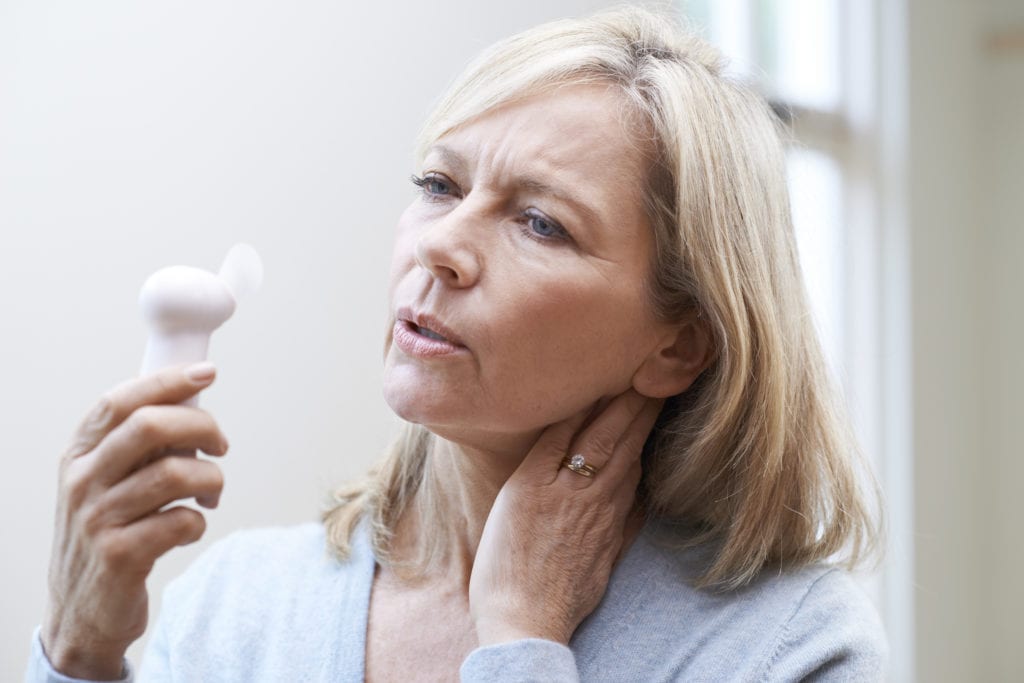
How long does it last?
Now, when it comes to the question of how long menopause will last, once you enter menopause and are entirely out of perimenopause, it has been shown that the symptoms may continue for four to seven years on average. However, most women will experience a major decrease in the frequency and intensity of their symptoms as time progresses.
Stages
Next, when it comes to the overall process of menopause, there are three main stages that every woman goes through, and that is perimenopause, menopause, and postmenopause. Here’s a brief overview of each.
1. Perimenopause
As we mentioned earlier, perimenopause is the first stage of menopause as women begin to transition into menopause itself. This is when your cycles will become irregular, but they haven’t stopped quite yet. The average woman will reach this stage around the age of 47.
2. Menopause
After perimenopause, women will reach menopause, which is when a woman will have her final menstrual cycle, and symptoms that were present in perimenopause will become stronger. This is also the period in which the biggest changes take place in a woman’s body. Most women, on average, will reach menopause by age 51.
3. Postmenopause
And lastly, postmenopause is the third and final stage of menopause and begins when you hit the year mark from your final period. Once that happens, you will remain postmenopausal for the rest of your life, and your estrogen level will remain at a constant low.
What Happens Afterwards
And finally, just as we mentioned above, once you’ve gone through the many years leading up to menopause, followed by menopause itself, you will officially hit postmenopause, which signifies the end of the menopausal cycle. This is the time of a woman’s life where symptoms that were experienced during menopause decrease, and a lower level of estrogen will remain forever present in the woman’s body. This is also the time at which you are officially no longer able to get pregnant and when your menstrual cycle will no longer occur.
In addition to these changes in a woman’s biological system, symptoms of menopause also ease for most women during postmenopause, and you will begin to feel more emotionally stable again. However, as a result of the estrogen lost during menopause, postmenopausal women have an increased risk for a number of health conditions, such as heart disease or osteoporosis. Therefore, if you are in or near postmenopause, make sure you keep an eye on your overall health and visit a doctor as needed to avoid any potential health problems.
Conclusion
Overall, menopause is a naturally occurring three-stage process in a woman’s life that every woman must go through. And since it’s bound to happen at some point or another, it’s best to learn about it as much as you can so you can help ease any symptoms that may come with it as soon as they arise. We hope this article has helped to give you some better insight and guidance for how to work through perimenopause, menopause, and postmenopause as smoothly as possible.
Sources:
https://www.webmd.com/menopause/guide/menopause-information
https://my.clevelandclinic.org/health/diseases/15224-menopause-perimenopause-and-postmenopause


